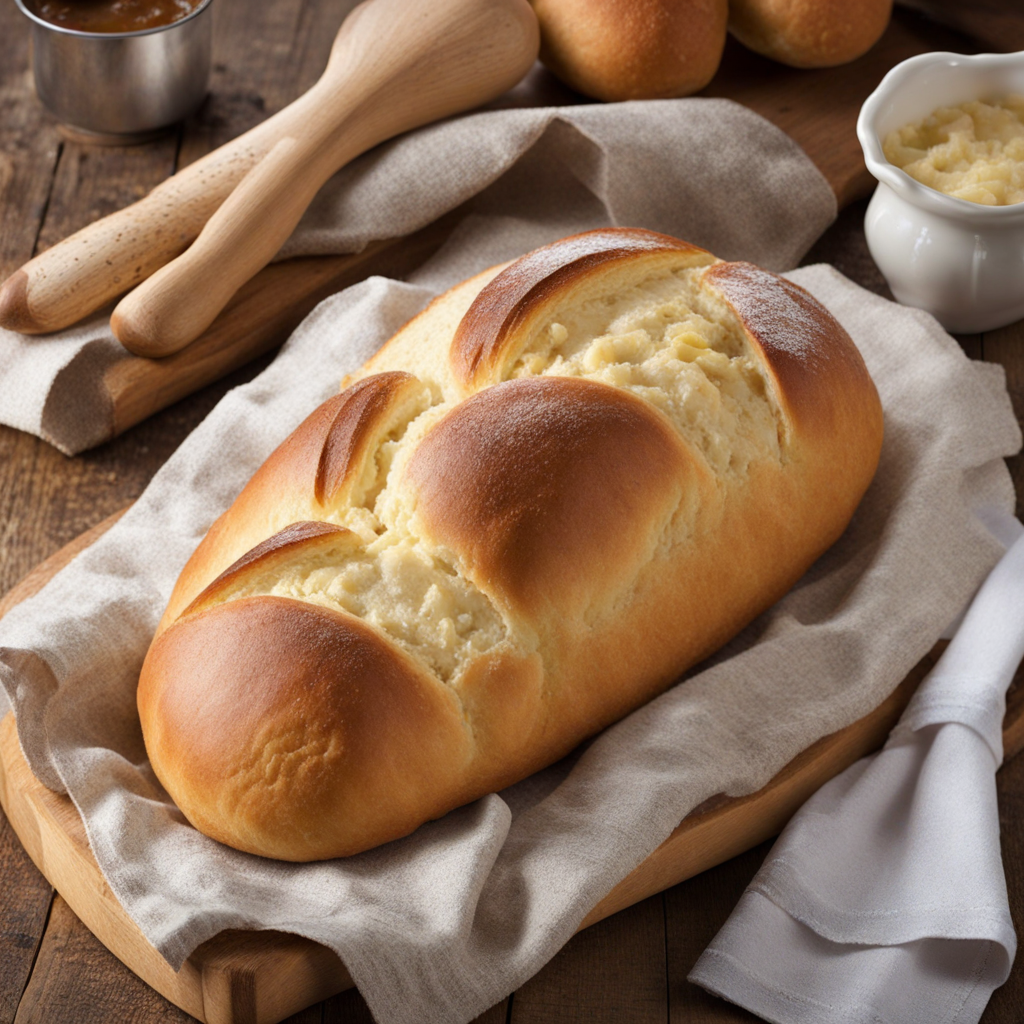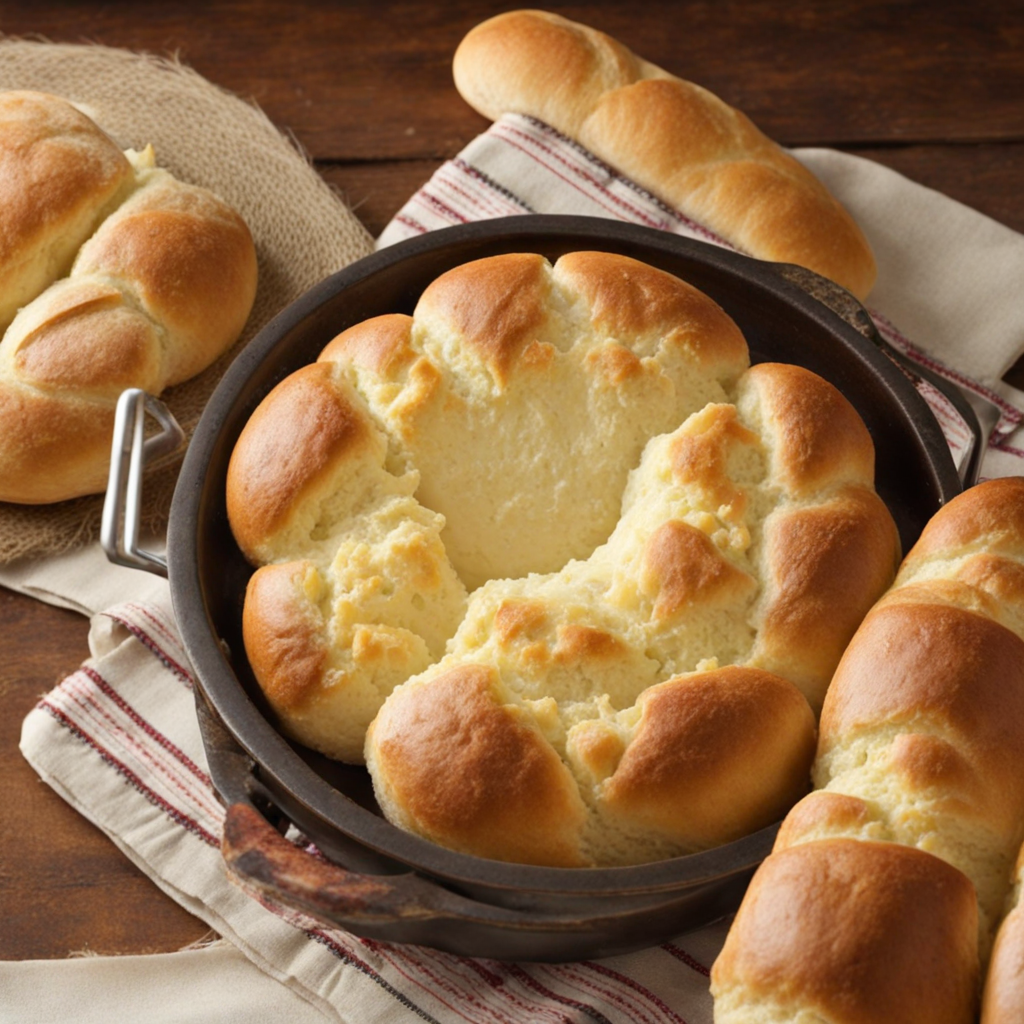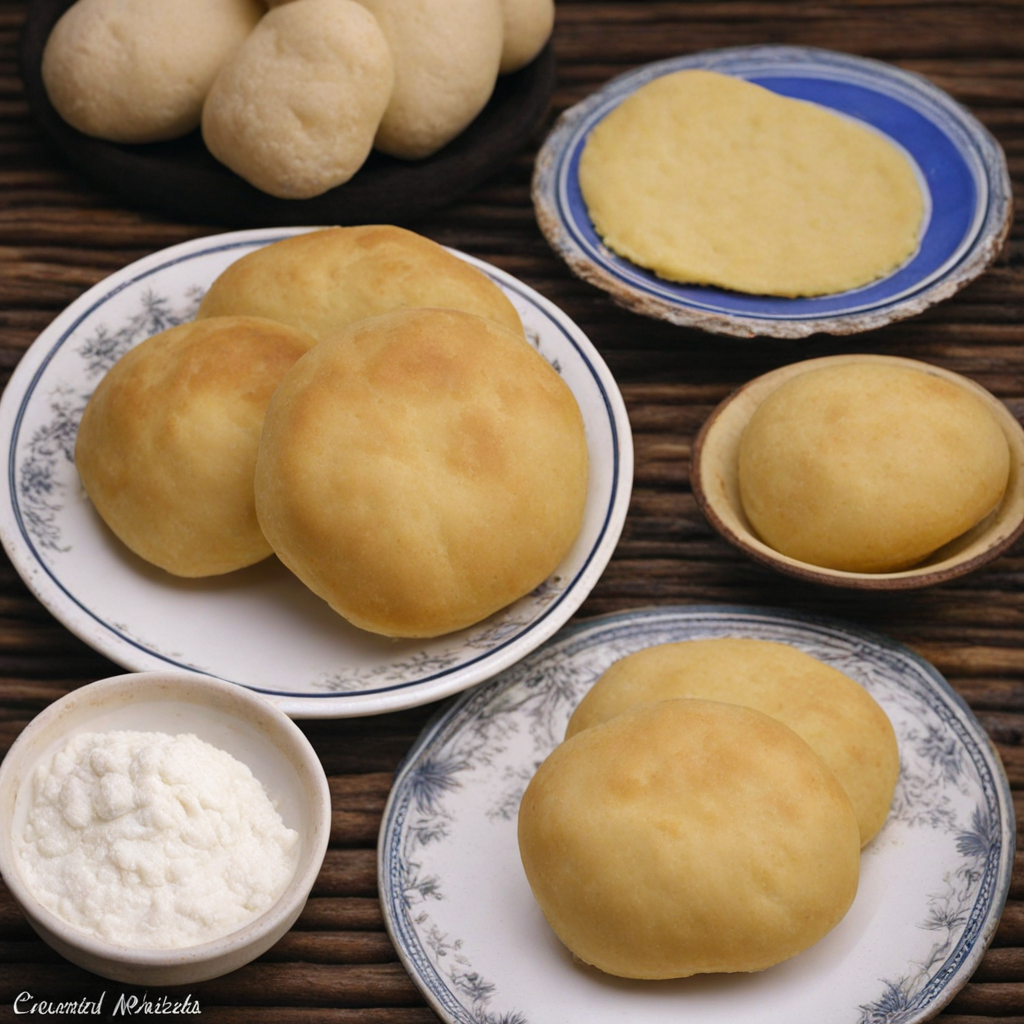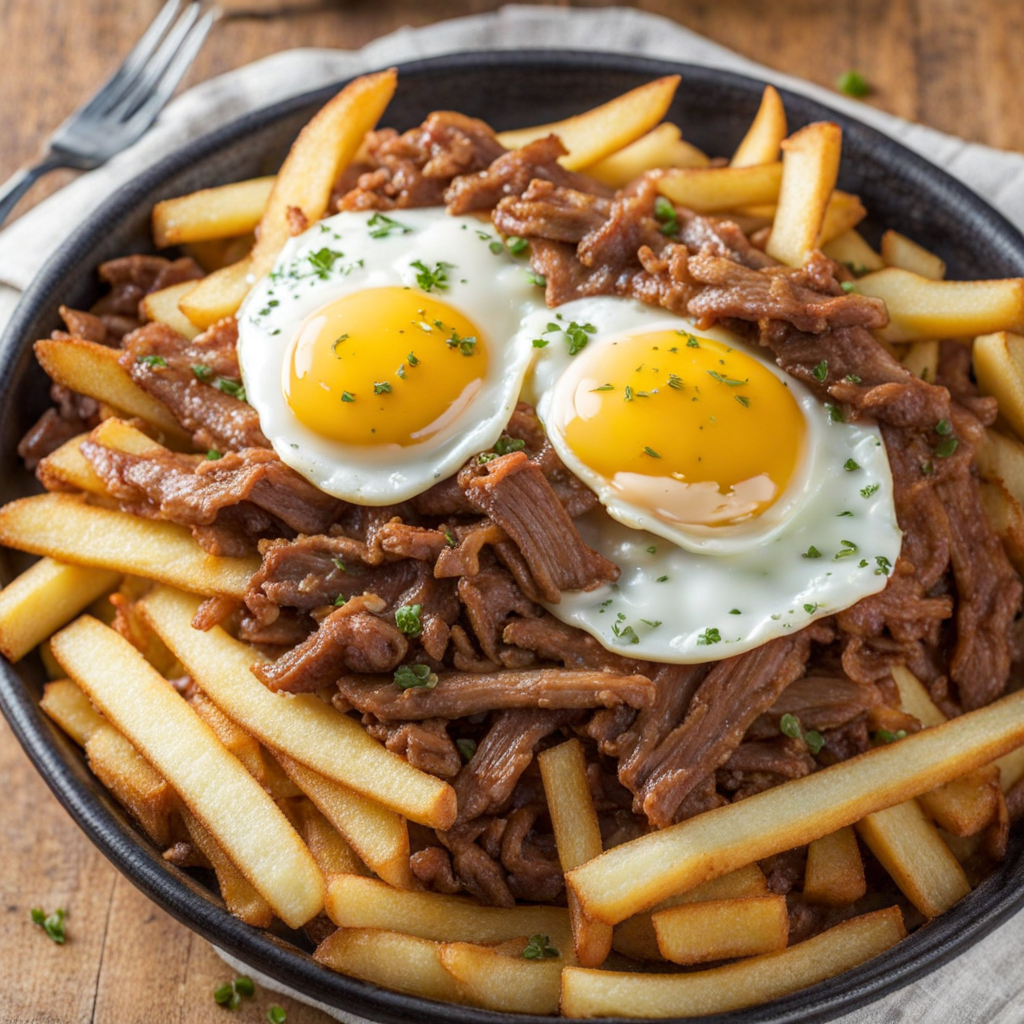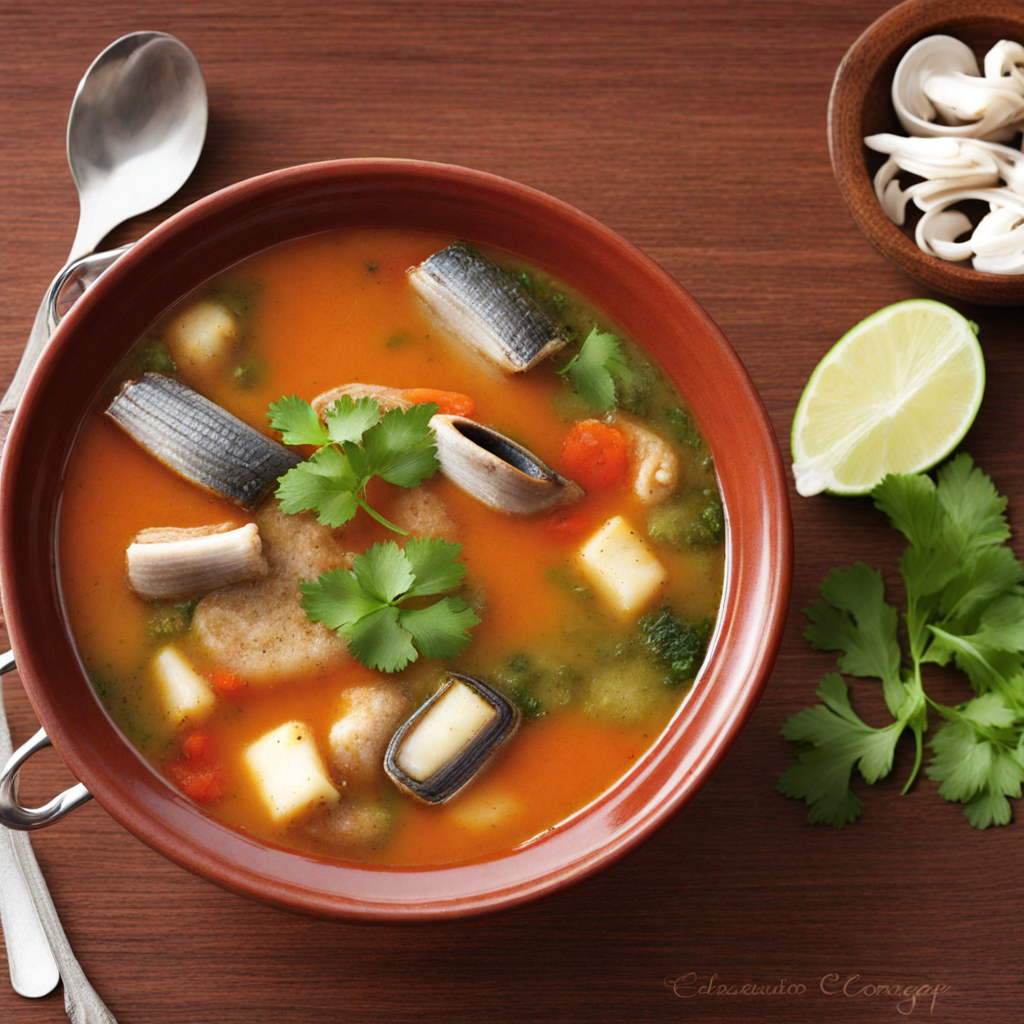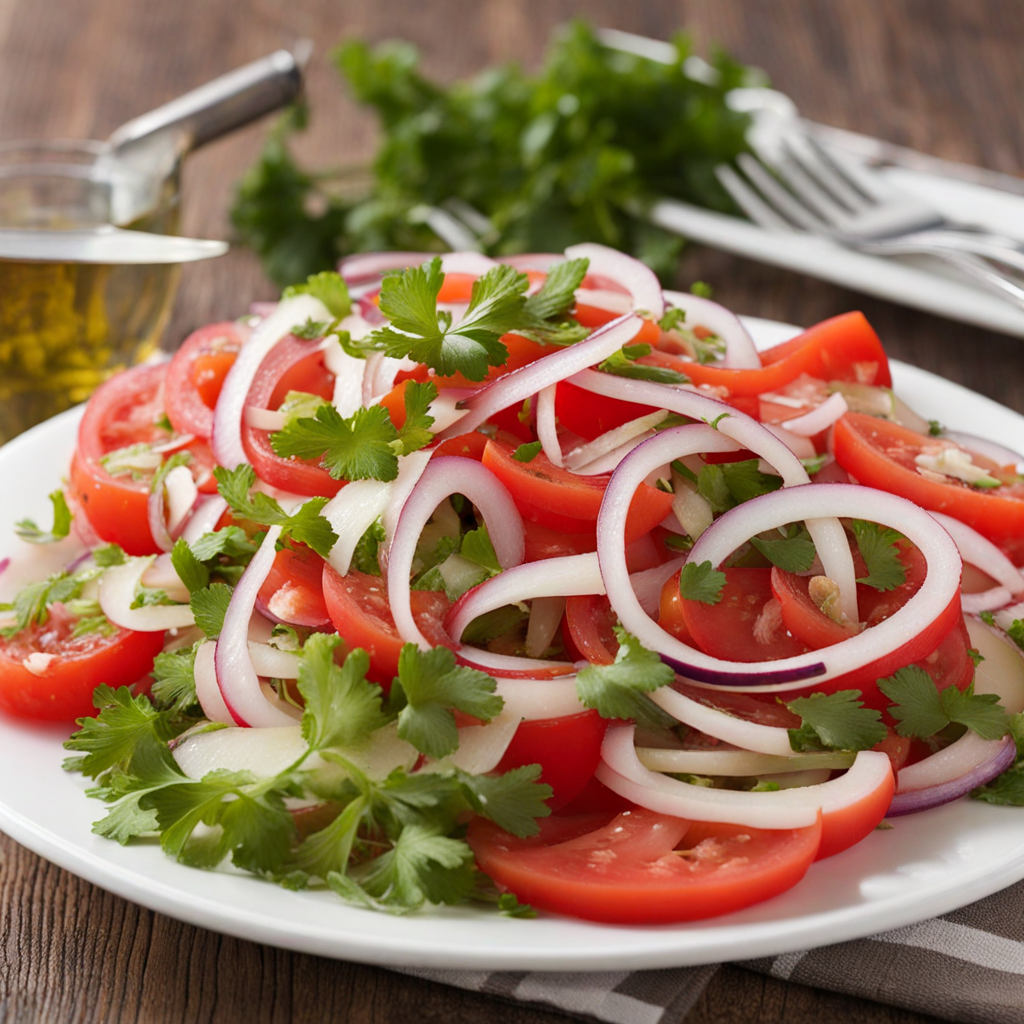Pan Amasado
Pan Amasado is a traditional Chilean bread that embodies the rich culinary heritage of the country. This rustic, round loaf is made from simple ingredients such as flour, water, yeast, and salt, yet it offers a delightful depth of flavor and texture. The dough is hand-kneaded, which gives it its characteristic chewy crust and soft, airy interior. Often enjoyed warm from the oven, Pan Amasado has a golden-brown exterior that invites you to break it open and experience its comforting aroma and inviting crumb. What sets Pan Amasado apart from other breads is its versatility. It can be paired with a variety of toppings, from creamy avocado and tangy pebre (a Chilean salsa) to hearty cheese or cold cuts. Many Chileans enjoy it as part of their breakfast, lunch, or dinner, making it a staple in households across the country. The bread's slightly nutty flavor profile complements both sweet and savory accompaniments, making it an ideal canvas for culinary creativity. In addition to its delightful taste, Pan Amasado holds a special place in Chilean culture, often being a centerpiece at family gatherings and celebrations. The act of making this bread is a communal experience, bringing together family and friends to share in the joy of baking. Whether enjoyed fresh out of the oven or toasted to perfection, Pan Amasado is a warm embrace of Chilean tradition, inviting you to explore its unique flavors and the stories woven into each loaf.
How It Became This Dish
The History of Pan Amasado: A Culinary Treasure of Chile Origin and Early Beginnings Pan Amasado, a traditional Chilean bread, has roots that trace back to the indigenous peoples of the region, particularly the Mapuche. These early inhabitants of central and southern Chile baked simple flatbreads made from locally sourced grains, such as trigo (wheat) and maíz (corn). The technique and recipes were passed down orally, creating a rich tapestry of bread-making traditions that have evolved over centuries. With the arrival of the Spanish colonizers in the 16th century, significant changes took place. The Spanish brought with them new baking techniques and ingredients, including refined wheat flour, which eventually became a staple in many Chilean kitchens. Combining indigenous practices with European influences, the early Chileans began to develop a bread that was not only sustenance but also a symbol of cultural identity. Cultural Significance Pan Amasado holds a special place in the hearts and homes of Chileans. It is not merely a food item; it represents hospitality and community. Traditionally, it is baked at home and often shared among family and friends, especially during gatherings and celebrations. The act of making Pan Amasado is steeped in tradition, often involving multiple generations in the kitchen. In many rural areas, bread-making is a communal activity, where neighbors come together to knead, shape, and bake the dough. This practice fosters a sense of belonging and strengthens community bonds. Moreover, Pan Amasado is frequently enjoyed during significant cultural events, such as Fiestas Patrias, Chile's national celebrations in September, and other festive occasions. It is typically served with pebre (a salsa made of tomatoes, onions, cilantro, and chili), cheese, or various meats, embodying the essence of Chilean gastronomy. The Recipe and Its Evolution The basic recipe for Pan Amasado consists of flour, water, salt, and sometimes yeast. What sets it apart from other breads is the method of preparation. The term "amasado" comes from the Spanish verb "amasar," meaning "to knead." The dough is kneaded vigorously, giving the bread its characteristic texture—crusty on the outside and soft on the inside. Traditionally, it was baked in an adobe oven or on a hot stone, imparting a unique flavor that modern ovens cannot replicate. Over time, various regional variations of Pan Amasado have emerged. In the northern regions of Chile, for instance, the bread may be slightly sweeter, incorporating sugar or honey, while southern versions often include ingredients like potato or even cheese for added flavor and moisture. These regional adaptations illustrate how local ingredients and cultural influences have shaped the bread's development. In the 20th century, the industrialization of food production introduced pre-packaged breads, which began to overshadow traditional methods. However, the rise of the artisanal and slow food movements in the late 20th and early 21st centuries has sparked a renewed interest in traditional baking practices. Many young Chileans began to seek out their culinary heritage, reviving the art of making Pan Amasado and rediscovering its importance in their cultural identity. Pan Amasado Today Today, Pan Amasado is widely enjoyed across Chile and has become synonymous with Chilean home cooking. Many families still adhere to traditional recipes, while others experiment with gluten-free or whole-grain variations to adapt to modern dietary preferences. Bakeries and restaurants often feature Pan Amasado on their menus, showcasing its versatility as both a staple and a gourmet item. The bread has also gained recognition beyond Chile's borders. As Chilean cuisine gains popularity globally, Pan Amasado is being introduced to international diners, who appreciate its rustic charm and heartiness. Its simple yet comforting flavor profile resonates with those who seek authentic culinary experiences. Various food festivals in Chile celebrate traditional foods, where Pan Amasado often takes center stage. These events not only highlight the bread but also educate attendees about its history and significance, ensuring that future generations continue to appreciate and preserve this cultural treasure. Conclusion Pan Amasado is more than just a loaf of bread; it is a testament to the resilience and adaptability of Chilean culture. From its indigenous origins to its modern-day interpretations, it represents the blending of influences that characterize Chile's culinary landscape. As the world continues to embrace local and artisanal foods, Pan Amasado stands as a symbol of community, tradition, and the enduring bond between food and culture. Whether enjoyed at a family gathering, a neighborhood celebration, or a restaurant, Pan Amasado remains a beloved staple that tells the story of Chile's rich history and cultural heritage.
You may like
Discover local flavors from Chile


